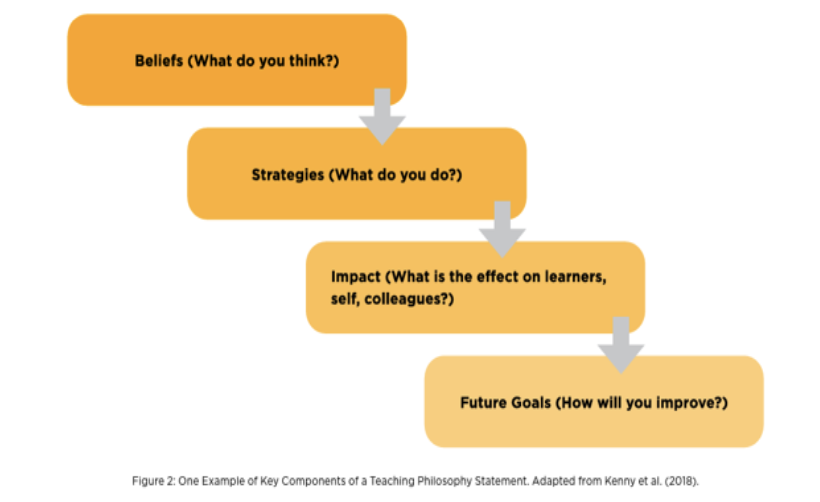Teaching Philosophy Statements
A teaching philosophy statement (TPS) is a short personal statement about your evolving perspectives on/beliefs about teaching and how students learn. It is written from the perspective of where you are right now in your evolution as a teacher.
What a Teaching Philosophy Statement is Not:
- A list of your past teaching experiences and/or a list of what you can teach at the job you are applying to (instead, you can more subtly weave in examples from your previous teaching that might highlight the ways that you are especially qualified for the teaching)
- A summary of all your student evaluations (This goes in a teaching dossier. However, if students consistently describe you in a way that is critical to your overarching teaching philosophy, choose a representative example or two that can demonstrate evidence of how your philosophy plays out in your teaching practice.)
- A summary of feedback from colleagues and mentors
- An article on teaching
- A general philosophy about the state of teaching today
Why Write one?
- To support your application for a faculty position
- A required or highly recommended part of a tenure dossier
- To reflect on your teaching to give you a better idea of your beliefs
and strengths as an instructor and the ways in which you could
develop your teaching practices over time - To apply for teaching awards
What are the components of an effective TPS?
Learner-Centeredness
- Empathy concerning difficulty of subject
- Awareness of student challenges in learning the subject
- What students do and the learning process
- Focus on learning – humanizes teaching
- Creates classrooms that are welcoming, challenging, supportive to a
diversity of students
Deep learning
- Makes course/subject personally meaningful
- Consider goals beyond the course
- Stated passion & enthusiasm for teaching
- Transfer of learning – beyond course

- Critical thinking
- Independent, reflective thinking
How to Write a Teaching Philosophy Statement
Format:
- 1-2 pages single spaced maximum
Writing Style:
- Personalize your TPS! Use first person (“I”) and a more conversational tone that makes the reader feel like they are getting to know you as a teacher/educator
- Avoid unnecessary jargon and making grand claims about education, teaching, and learning in general.
- You can use scholarly literature but use it sparingly and only to help you to describe your beliefs/perspectives
- Tie your ideas together so that they flow – try to tell a story!
- Be creative in how you present your beliefs. You do not have to follow a typical essay format if this does not help you to convey your philosophy. You could choose to include a poem, photo, anecdote quote and so on if that helps you to articulate your beliefs.
Since this is a very personal statement, there is no one "right" format. The approach and format that you select should be based on what is meaningful to you and that will be understood easily by the audiences with whom you will share your philosophy.
What should it include?
- Include an opening that hooks the reader. Many people choose to use
a quote, metaphor or anecdote that depicts their beliefs about learning & teaching. Explain how the quote/metaphor/story connects to your beliefs about learning and teaching - Keep narratives about your personal history/work experiences to 1paragraph (maximum)
- Consider breaking the body of your statement into some main themes that include:
a. Yourmotivationsforteaching(whydoesteachingmattertoyou? Why are you an educator?)- Your beliefs about student learning – be sure to give some evidence of how you enact these in your teaching (see “c” below)
- Approaches and techniques that you use with students that align
with your beliefs about student learning (e.g., assessment,
student engagement, mentorship etc.)) - On what theories, philosophies, research, and/or experience
might your beliefs based? - Personalgoalsthatyouhavesetyourselfasateacher.
4. Include a conclusion. You may want to tie this back to your main metaphor (if you use one) or talk about your goals that you have for the future that will help you to grow as a teacher/educator.
Basic Structure of a TPS

We can help!
If you would like to book a consultation or need support regarding writing a TPS, please book a consultation with LLI at lli@lums.edu.pk


